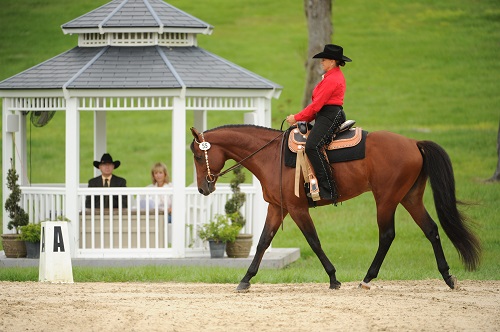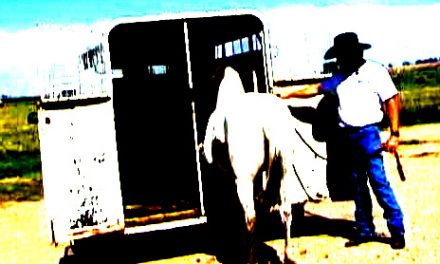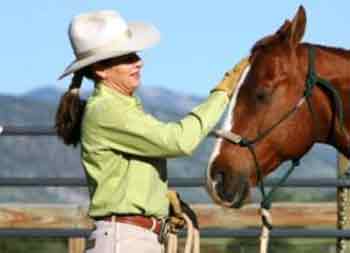Palm Partnership Training™
Building a Partnership with Your Horse
 Before we start training outside the box (a confined area), it is important to recognize and learn how to read the horse to tell if he has inner energy and playfulness that needs to be released through forced exercise like longeing.
Before we start training outside the box (a confined area), it is important to recognize and learn how to read the horse to tell if he has inner energy and playfulness that needs to be released through forced exercise like longeing.
Many riders do not realize that any healthy, fit horse has some level of inner energy that must be released before he can concentrate on the task the rider will be asking him to do. The level of inner energy can vary among horses, but is always there. It may be present in a healthier dose in higher strung or sensitive horses.
Most riders will also face another issue when training outside the box. Their horses may be overly sensitive and more high-strung than usual when taken into new surroundings. Riders tend to expect that the horse will work and perform in new surroundings in the same way as he does at home. They do not realize that a horse will nearly always be different in a new and different environment. This is especially true of horses that are not ‘seasoned’ – – those who have not become experienced in going different places and traveling many miles over many years.
Probably one of the hardest, but most important, things to learn is how to read a horse to know if he has inner energy that should be released or is calm and ready for schooling. One of the most obvious signs of inner energy are his ears moving very fast and his head moving side to side. Under saddle the ears and head are an easy indicator to observe because they are right in front of the rider! We can see tension or relaxation of the horse’s mouth while on the ground or hear him be nervous under saddle with noises like grinding his teeth. Relaxed and soft eyes indicate acceptance, while bulging eyes show alarm.
His breathing is an important indicator, especially when riding outside. A horse will always try to smell with big breaths if he is unsure or afraid, before he spooks. His skin, whether it is relaxed or tensed tight and twitching like there is a fly on it, communicates his mood. Also, another very obvious indicator of alarm in your horse is his tail. If the horse is wringing or switching the tail, he is irritated or frustrated.
While doing a forced exercise, like longeing, a horse will tell you if he is playful and has inner energy to release through these common signs: (1) shaking his head, like he is saying “no”, (2) flicking his ears with tight or tense muscles in his neck and body, (3) drastic loss of attention, and (4) wanting to run, buck, kick up heels, or kick at you.
If the horse is communicating with one or any of these actions, it is important to work him to release his energy, instead of trying to calm him down. Working him means making the horse go forward, but not running like a maniac. While longeing, if he starts to run out of control, put both hands on the longe line, lean back and use a checking pull, instead of a constant pull, to bring him back to a controlled speed and keep his head to the inside. Get him to exercise at the trot, then walk, back to the trot, then back to canter. Trot should be a square trot, not a jog. Do not let your horse cross-canter (left lead in front, right lead behind). If he does, bring him back to trot, balance and get organized, then go back to canter.
Let the forward motion help you evaluate his level of inner energy. When the horse begins releasing it, his stride will become smoother. The tenseness in his body will relax. His tail will relax and swing with his gait. His nostrils will flare and the veins in his neck will pop out, even in cool spring weather. These are signs that inner energy is releasing. His head, eyes, and ears will lose their tenseness or quick movement. When one ear cocks toward you, his concentration is coming back to you. He will begin to respond quicker to commands.
When you think his inner energy is released, test him by stomping your feet or clap your hands while he is longeing. If he shows any of the four signs of inner energy, he needs more work to get it out before schooling.
Your Next Step…
If your horse’s past reactions or behavior while schooling outside the box surprised or concerned you, prepare to deal with them by bringing longeing gear along on the next ride. Attach the longe line to the saddle, leave the halter on the horse, stick a shorter 3-foot longe whip in the back of your pants or some other place where it will be safe and easy to carry.
As soon as the horse shows signs of nervousness, or becoming high strung or distracted, get off, control him on the ground, and longe him when you can find a safe place on the trail. Lead him to an open area where he can be worked. Don’t worry that getting off will cause him to repeat a misbehavior just to get you off his back. This will not happen if the rider has a plan to take this action. However, if the rider jumps off in fright or worry, the horse will sense it. This will reinforce to the horse that misbehaving will intimidate the rider.
Remember, a horse knows what we are thinking. We are all afraid of falling off; it is a natural reaction. Get the horse’s inner energy out first. If you are worried or frightened in the saddle, get on the ground and take charge of the horse. Riding with a friend on a very seasoned horse will help your ‘green’ horse on the trails. It will make schooling outside the box safer and more fun for you and your horse.
Lynn’s Training Tip…
Are your longeing sessions going around in circles? My Longevity Training Tape #5 – “The Art of Longeing” will teach you how to use longeing to improve a horse’s body position and balance, exercise through different speeds and gaits, condition him, and evaluate his readiness for riding or training. If you are planning on training “outside the box” (a confined area) or out on the trails, longeing is one of the best ways I know to help the horse to release his inner energy so he can safely concentrate on the lesson. Learn more about “The Art of Longeing” and other Palm Partnership Training™ educational products, services, and equestrian schools at www.lynnpalm.com.





